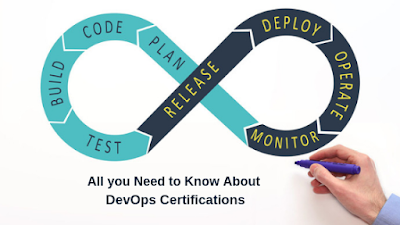What is DevOps?
DevOps is a word in recent times and lot of people and companies
are using it frequently. "What is DevOps". It is all about
perception, experience and understanding of the culture of the organizatioand
how it fits in the current era.
Let's define it clear that DevOps is not a technology, tool or any new framework. It is more of a knowledge and concept. We can also say it as a culture of an organization where application lifecycle management is in the centre of focus.
However, DevOps is made of combination
of two words 1) Development 2)
Operations. Both the team has different jobs in the Application release
management cycle. It deliver softwarequickly and effectively by fostering collaboration between differentdepartments like developers and Ops team. This is maintained by automation,
and by analysing organization-vast metrics to see what’s going right and what’s
going wrong.
DevOps includes different sub concepts such as:
Continuous Integration: It is more of a culture of integrating
application code or source code into the source code depository such as SVN and
GIT several times a day. Build tools such as svn,gnt,jernkins , Ant etc. are
used to verify check in by integrating source code depositories.
Continuous Testing: Automated Testing or Unit testing to be more
precise. Junit or Selenium is used for such kind of automated testing and these
tools are desegregated in the continuous integration behaviour by tools.
Continuous Cloud Provider: Virtual machines or cloud instance are
highly available, flexible and pay per use. It is beneficial to create
different types of instances for different environment such as development,
testing, staging, and production. Different cloud service providers such as Microsoft
Azure, Amazon Web services can be used. Different Cloud service models can be
taken into consideration such as Infrastructure as a Service (Iaas) or Platform
as a Service(Paas).
Configuration Management: Configuration management is useful to
make runtime environment ready in consistent manner across all the
environments. Chef, Puppet or Ansible can be used as configuration management
tools. Ease to manage resources with such tools in Cloud environment.
Continuous Delivery/Deployment: Continuous Delivery/Deployment is
terms which used loosely in day to day use. Continuous Delivery can be used
when package file is delivery ready into any environment while Continuous
Deployment term can be used when package file is production deployment ready.
It is always useful to arrange
end to end process of application release management. Visibility into arrangement
gives insight into end to end automation process and that is highly useful in
creating and maintaining DevOps culture.
We Capital Info Solutions
offers professional Cloud Computing Training courses Include DevOps, Salesforce,
AWS, Data science etc.



Comments
Post a Comment